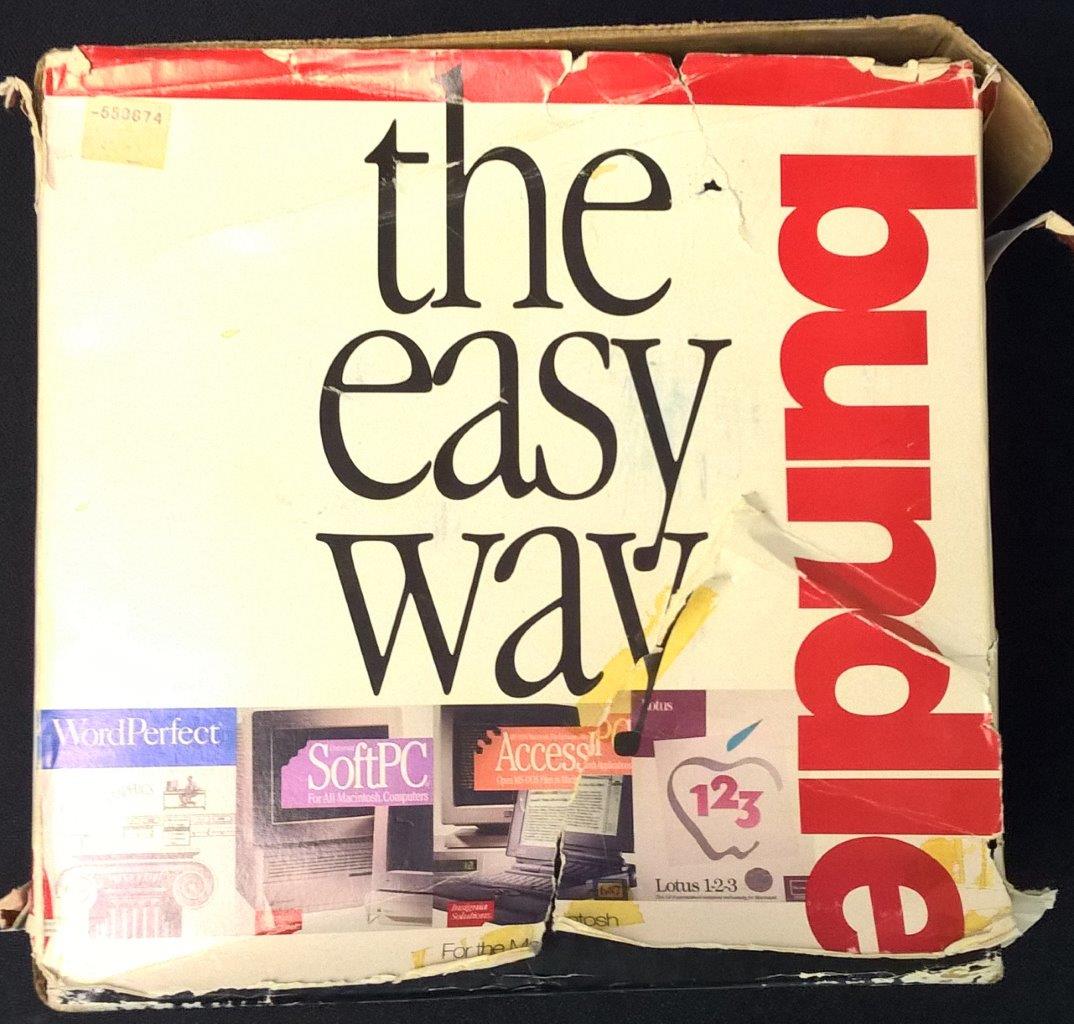
I came across this hefty box, “the easy way bundle”, as it bills itself, the easy way to save over $1,000 on four popular software packages for your new Macintosh computer. Clearly the box has seen better days over the last 27 years but amazingly the contents are just fine.
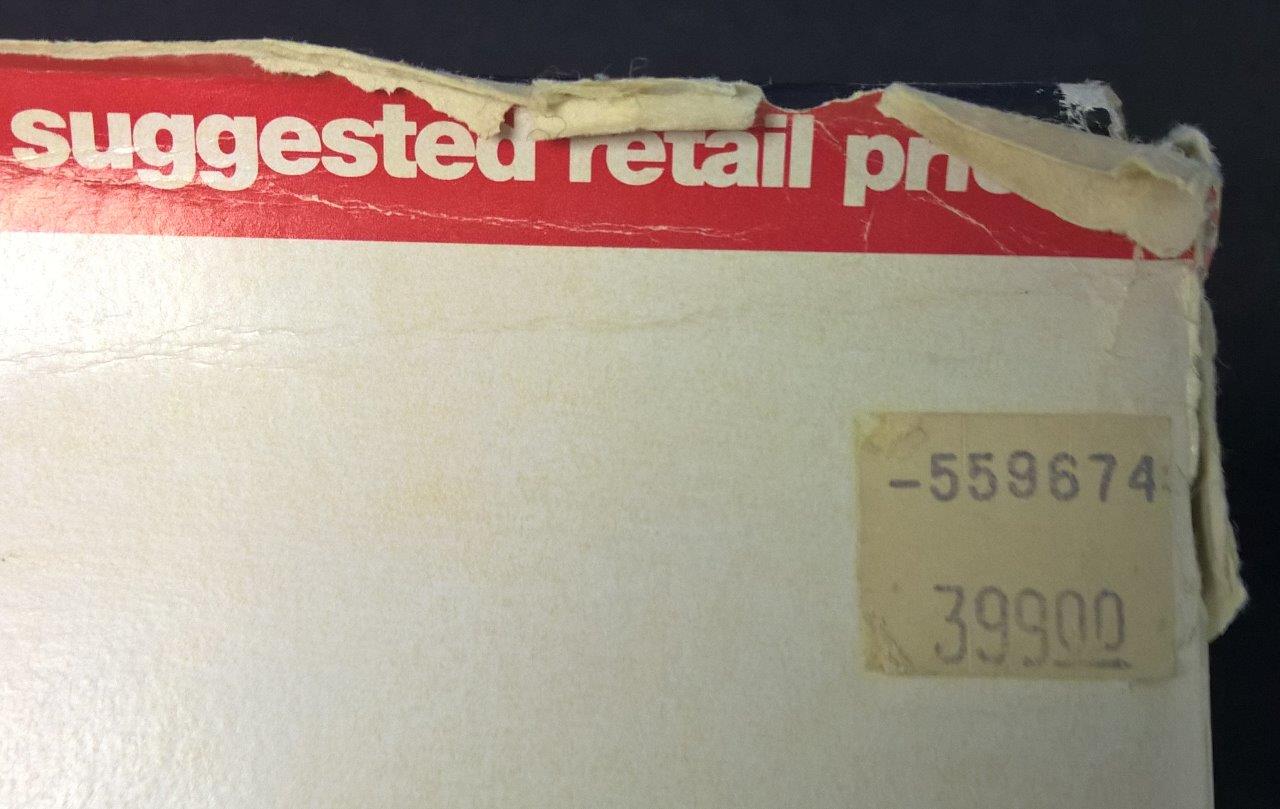
It’s amazing how much more cheaper software has gotten over the years. Software used to be super expensive on the PC level, it really wasn’t until the office bundling with new machines that drove the price down. Back in the 80’s and early 90’s it wasn’t uncommon to pay upwards of $500 USD for a single application, like a spreadsheet or word processor.
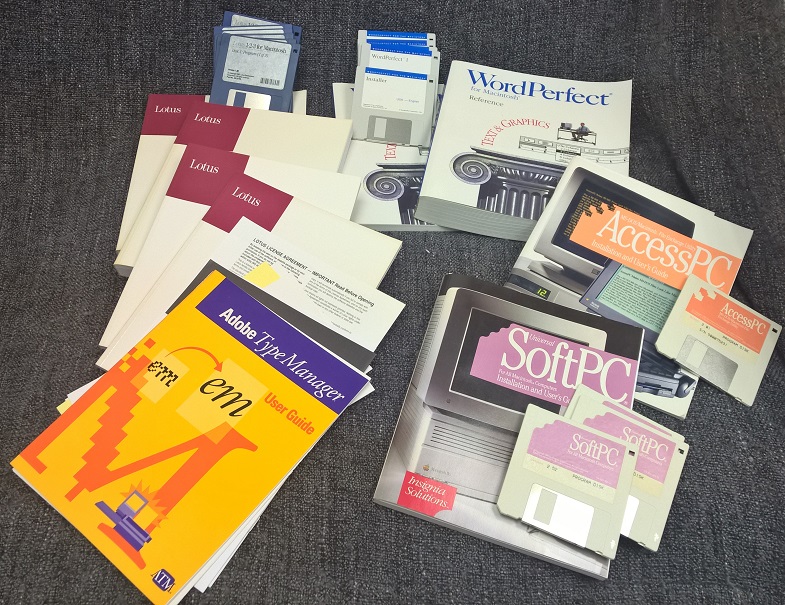
Inside the box is more boxes, and inside those boxes is a rare sight, manuals! Actual printed manuals! That is how you know this is something of near museum quality. I kind of like being able to read a physical book from time to time, and it’s really great.
Oh and incidentally the disks all worked, much to my amazement. I just needed to get a working Macintosh with a drive that can read 800kb disks and an Ethernet card.
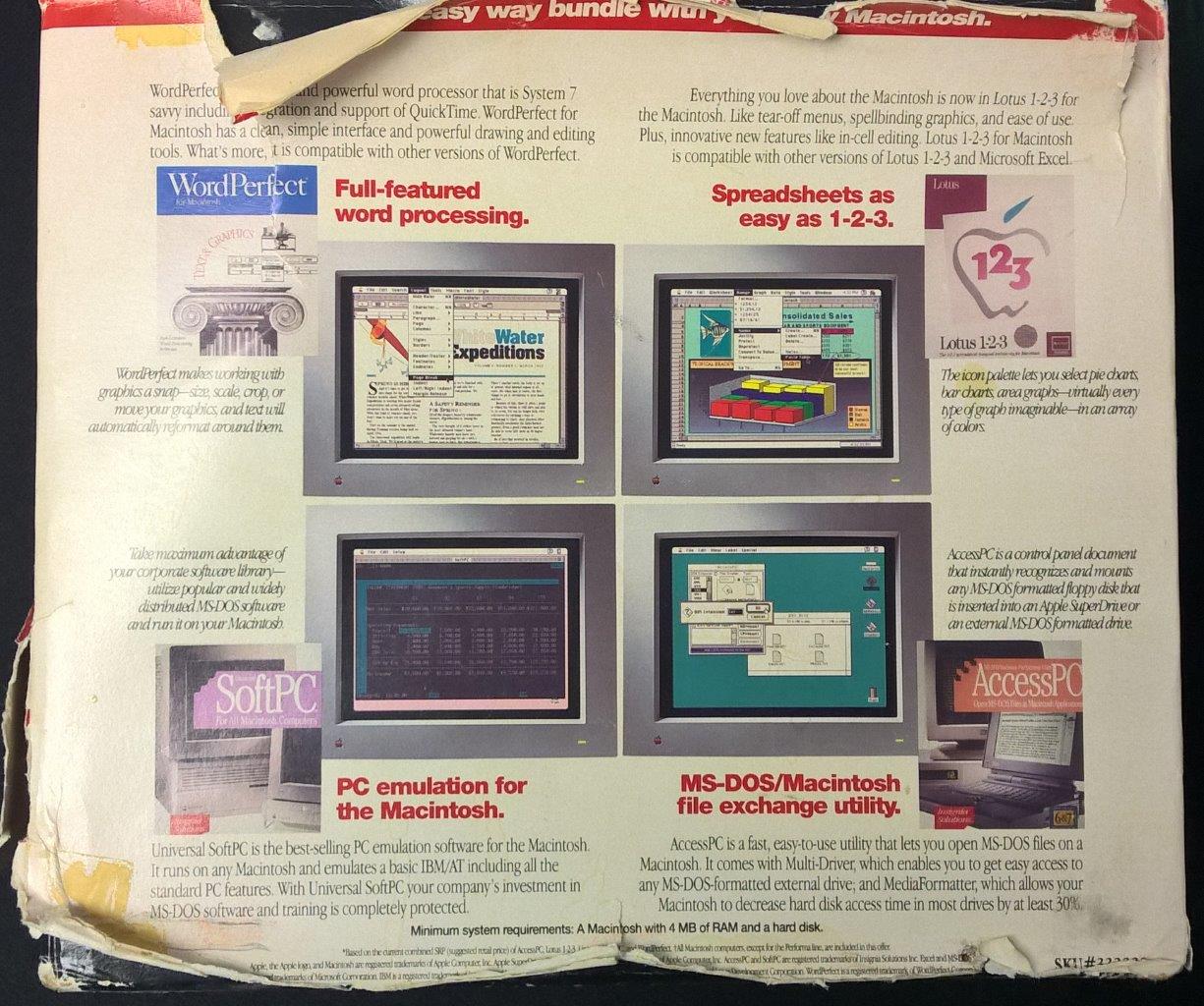
Although it does list four packages, it really is 3, featuring:
- WordPerfectÂ
- Lotus 1-2-3
- SoftPC
AccessPC is simply a FAT driver for MacOS to read MS-DOS floppies & removable media.
So let’s take a quick look!
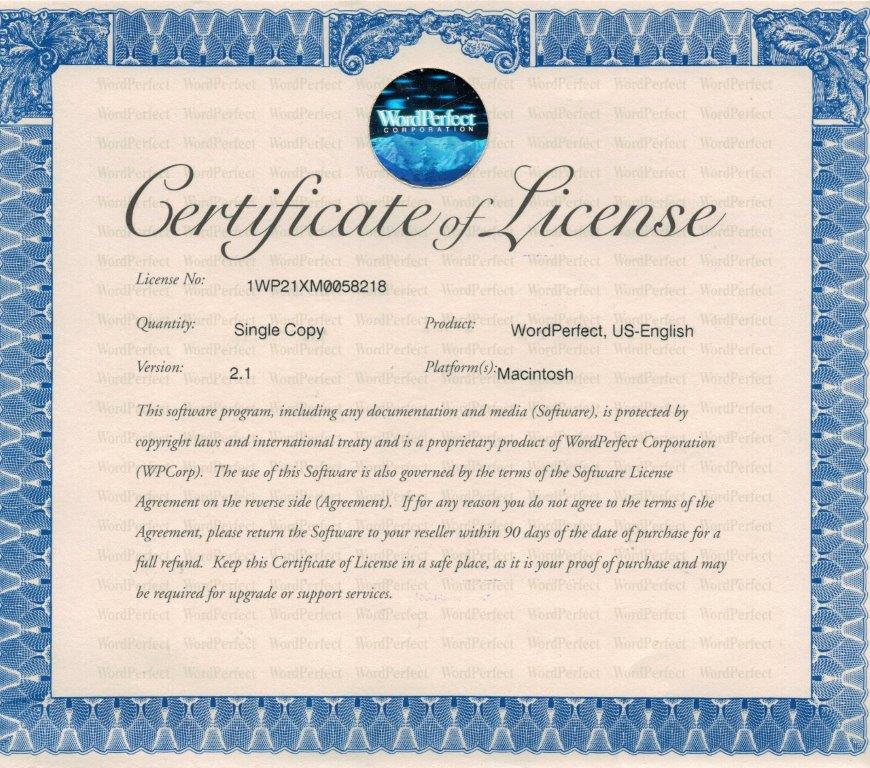
I haven’t seen something like this in a long while, an actual license printed on nice stock certificate stock paper (remember those?!), with a hologram tag. Does WordPerfect even exist anymore? Can I mail this in for an upgrade? Does it even matter?
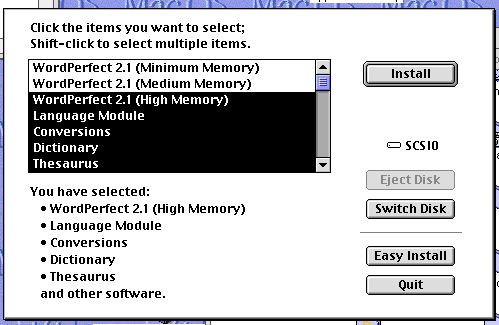
While the install options give the impression that WordPefect is a really full featured word processor once loaded up for some reason it really felt barren.
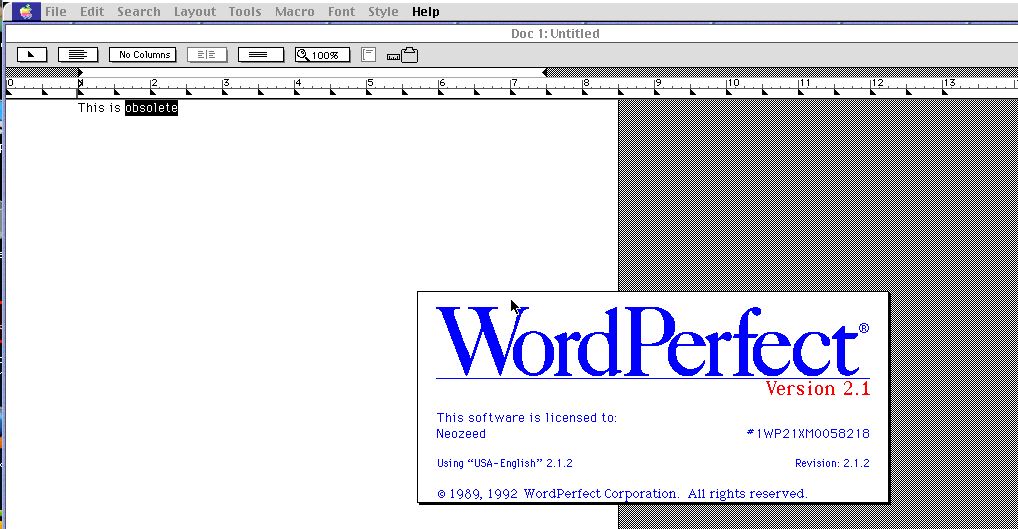
Although it does have the important proofing tools, don’t expect a dictionary or thesaurus to have anything more than the words, no definitions or anything like a style guide. It did ship on floppy and I guess I’ve just become so spoiled living in the future with terabytes of storage and an overwhelming supply of deference media.
Going back to 1992 is a real trip to not only how clean some of the UI elements feel, but just how seemingly feature sparse the more advanced applications feel.
Personally I never really liked WordPerfect so I more so installed it as a curiosity, much like when I had WordPerfect for Unix. I’m the crazy one that likes MS Word.
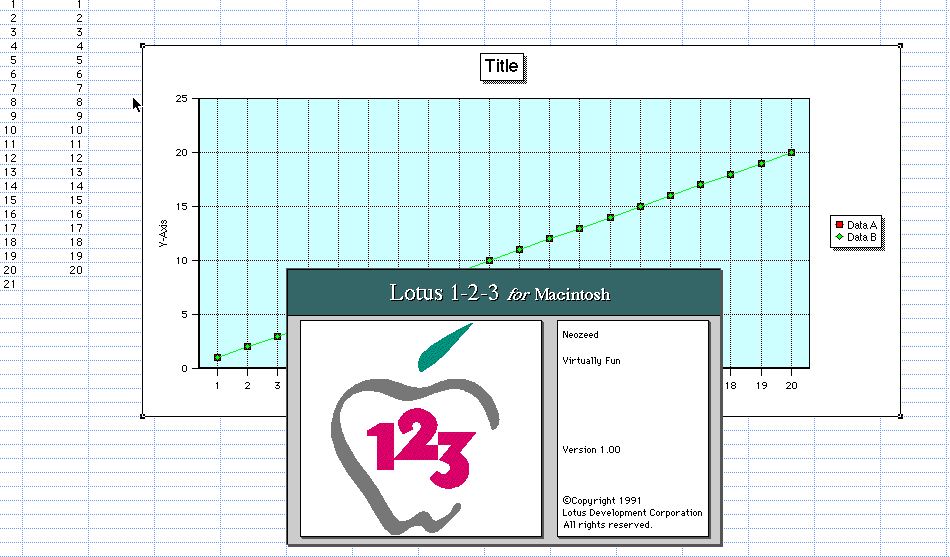
With that said, I went ahead and installed Lotus 1-2-3, and I was really surprised, that the installer was not only really appallingly bad, requiring you to copy the contents to the HD before installing it (so you need a lot of free space), but there was no copy protection at all either on the disks, or in the form of a certificate/serial code. In school I did start with 1-2-3, but with the onslaught of Microsoft Office had quickly moved to Excel, and after 30+ years I really don’t remember much of the slash commands, let alone how to use if effectively. Luckily the menu is okay to walk through, and of course there is Macintosh style menus so you don’t even have to deal with the slash menu if you don’t want to.
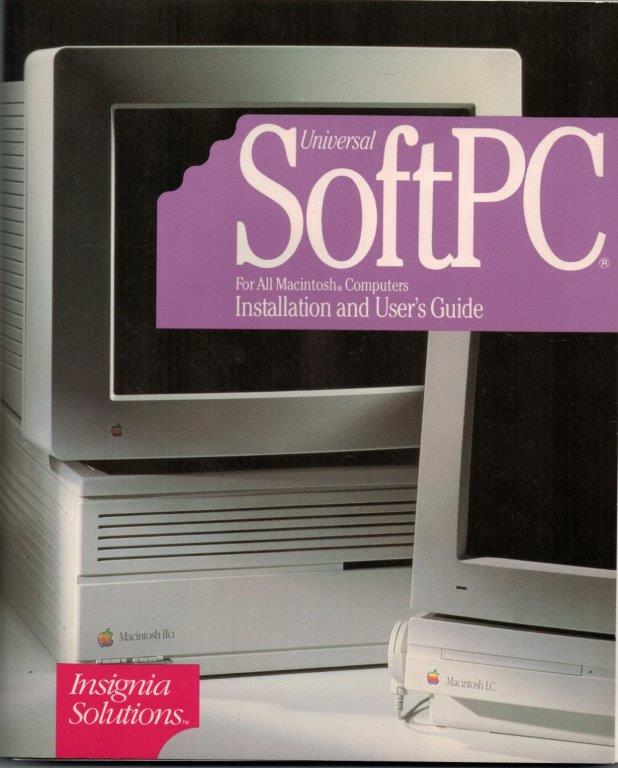
SoftPC didn’t come with a box within the box, just the two manual sets & the disks shoved into the manuals. I doubt it came like that, but this is all I have.
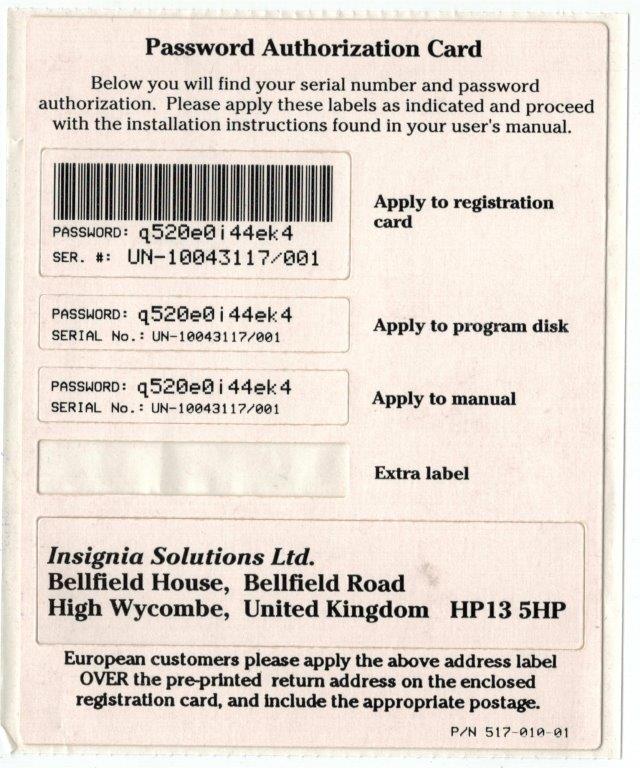
Compared to the WordPerfect certificate, the stickers hidden in the folds of the SoftPC manual just feel cheap. And the years have not been kind as you can see with the discoloration, and the cheap adhesive on them has completely dried off. After I had scanned this they have all fallen off the backing paper. Although I also have version 3.1, I didn’t want to lose this so I’ll just save it for prosperity.
And SoftPC is a great program, although it really is an absolute crutch, allowing you to run PC software on your Mac. Flash forward 30 years, and the industry continues with VMware & Parallels. What is more amazing is how so many leaders in PC emulation completely missed the virtualization market. But most people would think you were a little strange to run a PC on a PC. Or more than one at the same time.
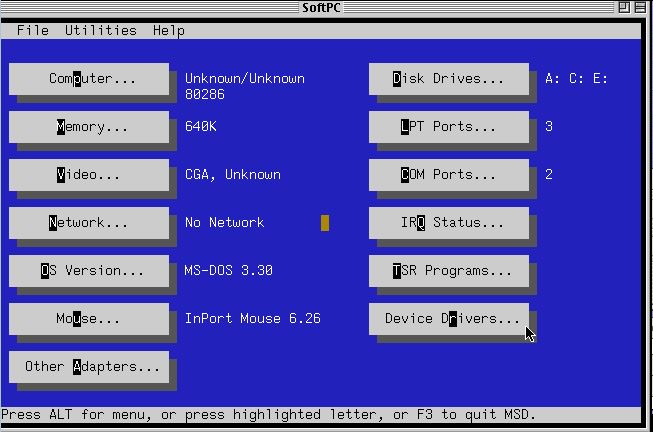
SoftPC emulates a really barebones PC, it only supports a maximum of 640kb of RAM, and the CGA graphics adapter. For anything more advanced you really need to get SoftAT, which supports more options. Or even better, get a copy of SoftPC 3.1, which not only allows more memory but bundles a copy of MS-DOS 5.0 and Windows 3.1
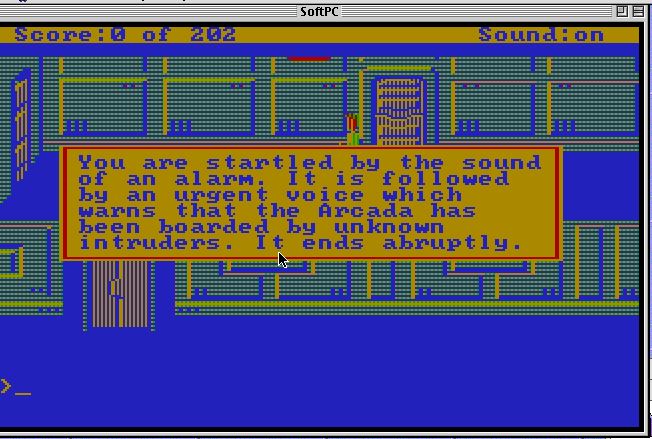
I found the emulation of the CGA kind of lacking when compared to version 3.1Â Although some games like BattleTech render just fine, Space Quest just looks horrible in version 2.52.
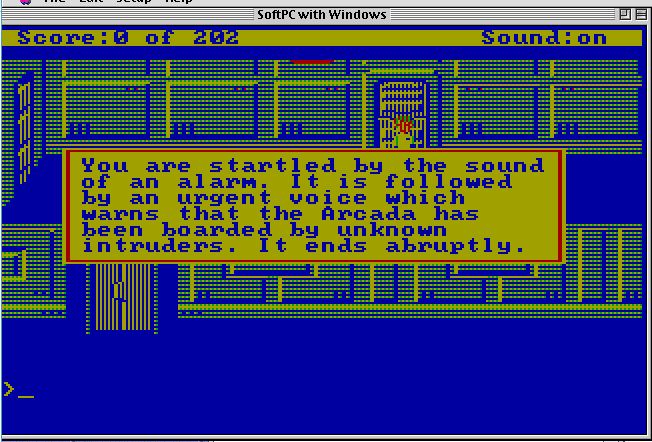
SoftPC 3.1 CGA running Space Quest 1
Although to be fair it doesn’t look so much better in version 3.1 either. However 3.1 emulates both EGA & VGA (along with expanded & extended memory) giving a far more richer 286 based emulation solution
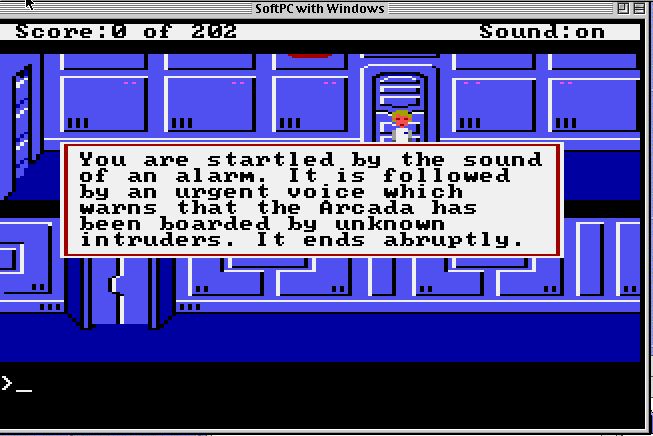
SoftPC 3.1 EGA running Space Quest 1
As you can see there really is no comparison to the EGA version.
Although there are far more better solutions today to do PC emulation, for some reason there is always something cool to have an emulator running an emulator.. Sadly the 80386 based emulation didn’t come to the 68000 based platform, instead the later generation emulation was only available to the PowerPC.
I guess it goes to show, but of all the applications I have for MacOS, I enjoy SoftPC the most. I suppose I need better softwares.

“Does WordPerfect even exist anymore?”
Actually, it does. See https://www.wordperfect.com/
Incidentally, I received a copy of this with an upgrade to Parallels Desktop, one of those modern virtualization products you referred to.
Wow, $249 for WordPerfect x9! That’s crazy!
I’d rather spend a few hours, and re-follow the steps, and re-compile Word 1.1a from source… Except I did!
It’s just amazing how they lost almost all momentum in the market, but they continue on. I guess it must be diehard secretaries, or government contracts that are just all too easy to renew.
That pricing is for Wordperfect Office, which includes Quattro Pro and presentation software. Government contracts tend to include only WordPerfect itself.
Microsoft eventually bought Connectix even though they used the Insignia emulation core for x86 emulation on the various NT ports. SoftPC on a 68030 was SLOW and SoftAT was likely unusable (leave that for a Quadra). One of the marketing points for the original PowerPC line was faster x86 PC emulation, but even then Insignia SoftWindows only supported emulating Windows 3.1 in Standard Mode until a later release. People who really needed to run PC software ran DOS Compatibility Cards.
I recently got an Macintosh LC to work, so I fired up the SoftPC install on that. In the Landmark 2.0 test it’s about a 2.6Mhz AT. Granted the 16Mhz 68020 on the LC isn’t exactly a powerhouse, but for such a crappy entry machine getting half XT speed in software ins’t so bad, although yeah, I wouldn’t want half an XT, or 1/3rd an AT either.
Those ‘bridge boards’ of the Apple world were interesting cards, but never could run stuff like OS/2 or Windows NT, they were okay for plain DOS+Windows. I forget if it ran DooM at all.
I find old computer emulators to be interesting, but I don’t have a Mac or an SGI workstation to play around with the SoftPC family of emulators.
Basilisk II will run it happily and much more faster than the real thing… As I mentioned above my LC gets a score of 2.6Mhz, which my 2010 MacPro gets a score of about 200Mhz, and that is with JIT disabled on Basilisk II.
When I was lucky enough to have a cube, the disk came with NS 2, and a copy of SoftPC 2 for NeXTSTEP. I used to run it on the 68040 25Mhz board it had, and it was acceptable. And of course there is the Qemu MIPS builds that can run Windows NT so you can use it via NTVDM.
At least modern machines are so fast, the penalty of emulating ancient single digit machines within another layer of emulation (or two) isn’t so bad.
Thanks for the response. I’m going to have to try getting it all set-up later on.
I think the reason why Microsoft hasn’t continued it on x64 is that the emulated CCPU is slower compared to the native V86 mode that we are used to in NTVDM.exe on i386. The CPU emulation is acceptable, but the video emulation is not the fastest of its kind. Even though when looking at the MIPS/PCC builds of NTVDM, there must have been some SDK to make a faster Assembler CPU for specific processors rather than using the universal CCPU.
The emulation of the video cards seems to be written in something called “J code”, perhaps some kind of universal assembler that assembles to C-code which is then being processed by the normal C-compiler (but is barely readable) as part of the build process.
Nevertheless, I ported NTVDM to x64 (https://github.com/leecher1337/ntvdmx64), so at least the curious ones can see how it would work if Microsoft would include it on their x64 machines. Imho this would be a better choice than not shipping a NTVDM at all.
If you want to know more about the inner workings of the NTVDM, just ask.
I want to know all the inner workings of the NTVDM on RISC and i386. I am curious about this software. I don’t know abotu very much of NTVDM CPU, all I know is that have a V86 mode on i386 and a CCPU on RISC. I want to know the workings of CPU, devices on NTVDM on RISC and I386.